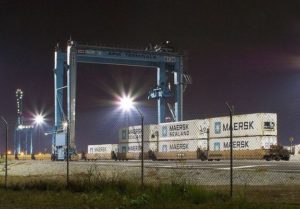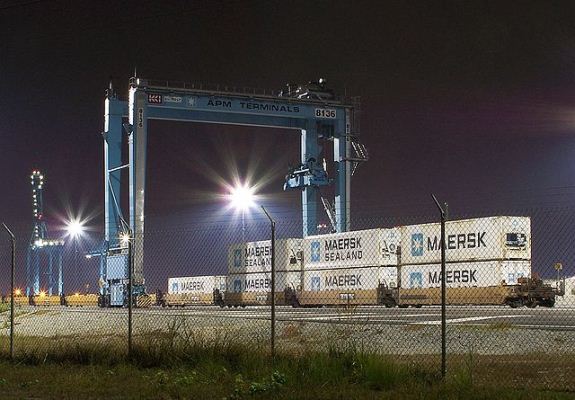 A.P. Moller-Maersk registered a surprise loss in the second quarter year-on-year due to a write-down of the value of its tanker and port assets, and warned that the major cyberattack it sustained in June would impact on third quarter earnings.
A.P. Moller-Maersk registered a surprise loss in the second quarter year-on-year due to a write-down of the value of its tanker and port assets, and warned that the major cyberattack it sustained in June would impact on third quarter earnings.
The Danish shipping and energy giant reported a loss of $264 million in Q2 from a profit of $118 million year-on-year as a result of post-tax impairments of $732 million related to Maersk Tankers and APM Terminals.
Moreover, the company expects to chalk up a loss of up to $300 million in the next quarter due to the impact of the malware attack.
But Moller-Maersk asserted: “Full-year guidance is reiterated for 2017, despite an expected negative financial impact of USD 200-300m in Q3 from the recent cyber-attack.”
At the end of June, Moller-Maersk was hit by the malware “Not Petya” where system shutdowns resulted in significant business impact especially within the container business.
“In the last week of the quarter we were hit by a cyber-attack, which mainly impacted Maersk Line, APM Terminals and Damco. Business volumes were negatively affected for a couple of weeks in July and as a consequence, our Q3 results will be impacted. We expect the cyber-attack will impact results negatively by USD 200-300m,” said the company.
Q2 revenue up 8.4%
Moller-Maersk said that in the second quarter, overall revenue grew by 8.4% to $9.6 billion year-on-year, the improvement helped significantly by higher freight rates for Maersk Line.
The underlying profit also expanded in the second quarter, improving from $134 million to $389 million with Maersk Line contributing with an underlying profit of $327 million.
“The performance of A.P. Moller-Maersk in Q2 was mainly driven by a profitable Maersk Line due to continued recovery in the container market and focus on restoration of profitability,” said Moller-Maersk.
“Maersk Line is again profitable delivering in line with guidance, with revenue growing by USD 1bn year-on-year in the second quarter. The profit was USD 490m higher than the same quarter last year, based on higher rates,” said Soren Skou, group CEO.
Maersk Line reported a profit of $339 million, a reversal from the loss of $151 million in the same period last year. The underlying result was a profit of $327 million from a loss of $139 million a year ago.
Market fundamentals continued to improve in Q2 as demand growth of 4% outgrew nominal supply growth of 1.4%, said Moller-Maersk. This has led to freight rates increasing 22% compared to Q2 2016 and 7.6% compared to Q1 2017. Freight rates increased by 36% on East-West trades and 17% on North-South trades. Transported volumes increased by 1.7% compared to Q2 2016. Volume grew on headhaul by 5.2%.
This, however, was offset by a decrease on backhaul by 5.6% as backhaul cargo was less attractive on some trades.
The transport and logistics unit reported a consolidated revenue of $7.7 billion in the second quarter, an increase of 15% compared to the same quarter last year, and an underlying profit of $442 million.
Energy, meanwhile, delivered an underlying profit of $182 million in Q2, with Maersk Oil as the main contributor.
2017 outlook
A.P. Moller-Maersk’s expectation of an underlying profit above the $711 million posted in 2016 is unchanged despite expected negative impact from the June cyberattack.
The guidance for 2017 excludes the acquisition of Hamburg Süd, which is progressing as planned, said Moller-Maersk. The transaction remains subject to regulatory approval, with an expected closing in the fourth quarter of the year.
Transport & Logistics reiterates the expectation of an underlying profit above $1 billion despite expected negative result impact from the June cyberattack.
Maersk Line reiterates the expectation of an improvement in excess of $1 billion in underlying profit, compared to 2016’s loss of $384 million, mainly due to improvements in freight rates and partly to increasing volumes. Global demand for seaborne container transportation is still expected to increase 2% to 4%, but in the upper end of the range.
The remaining businesses (APM Terminals, Damco, Svitzer and Maersk Container Industry) in Transport & Logistics still expect an underlying profit around 2016, which was $500 million.
Energy maintains an expectation of an underlying profit of around $500 million, with Maersk Oil being the main contributor.
Photo: William Grimes





